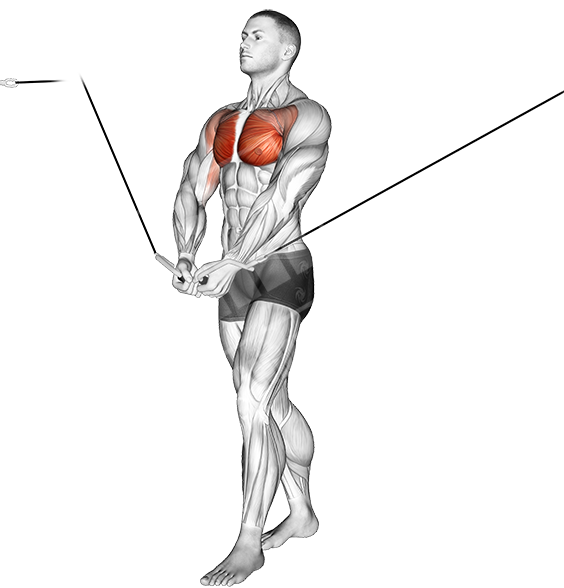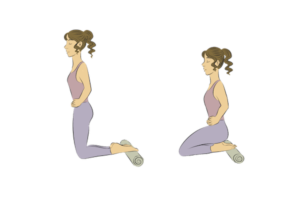
Is your ankle mobility lacking? Whether you’re an athlete, dancer, or just someone interested in staying healthy and fit, it is important to maintain proper ankle mobility test. Proper Ankle Mobility Exercises help improve your balance and stability, minimize the risk of injury, and enhance joint function.
In this blog post, we will discuss exercises that promote optimal ankle mobility so that you can stay active and enjoy a better quality of life. We will also cover some key principles to remember when attempting these exercises. Get ready for an increased range of motion as you embark on improving your overall ankle health!
Understand the anatomy of your ankle
The first step to improving ankle mobility is to understand the anatomy of your ankle. Your ankle joint consists of three bones: the tibia, fibula, and talus. These bones come together at the ankle joint, where a strong ligament (the anterior talofibular ligament) helps hold them together.
The lower leg muscles, such as the gastrocnemius, soleus, and tibialis anterior, also support the ankle joint. When these muscles are weak, it can lead to instability in the ankle which can cause pain and even injuries.
Why is mobility important?
Maintaining proper ankle mobility is an important part of overall health and wellness. Your ankle’s range of motion affects your ability to run, jump, walk, and even stand. When your ankles are stiff or weak, it can throw off your balance and put you at risk for injury. Additionally, limited mobility in the ankle joint can lead to pain in other parts of the body, such as your lower back, hips, and knees.
Strong, flexible ankles are essential for healthy movement and improved quality of life. However, it may seem like a minor issue, but limited ankle mobility can lead to significant functional limitations when performing activities requiring a range of motion in the joint. Improving the mobility of your ankle will not only help you move better, reduce the risk of ankle injury and improve your overall quality of life.
Best Ankle Mobility Exercises
Ankle circles

The ankle circles exercise is a simple and effective way to improve mobility and flexibility. This exercise targets the muscles of the lower leg and helps to build strength, stability, and coordination in the joint. It provides an active range of motion that benefits rehabilitation and sporting activities.
When done correctly, this exercise can help improve balance, reduce injury risk, and enhance joint function. It is important to perform the exercise slowly with control and to move through a full range of motion for optimal results. Here’s how to do it:
- Start by sitting on a chair or other sturdy surface with both feet flat on the floor. Ensure you are in a comfortable position and your back is supported.
- Lift one foot off the ground, maintaining a slight bend in the knee.
- Begin to make small circles with your lifted foot, rotating it clockwise for around 10 seconds before switching directions and circling anticlockwise for another 10 seconds.
- Maintain good posture throughout the exercise and keep your ankle as relaxed as possible.
- When you’ve completed one set of circles, switch to the other foot and repeat the exercise for equal repetitions on both sides.
- Aim for three sets, with rest periods between each set if necessary.
It is important to remember that this exercise should be done slowly with control. Please do not force the movement or push your ankle beyond its comfortable range of motion. If you experience any pain or discomfort during the exercise, stop and consult a healthcare professional to ensure that it is safe for you to continue.
Single leg balance

Single-leg balance is an important exercise for improving ankle mobility drills and overall coordination. This exercise helps strengthen the muscles in your lower leg, which can help to reduce the risks of injury and improve joint function. Additionally, it helps promote proper posture and alignment when standing or walking and increases balance and stability.
When done correctly, single-leg balance exercises can help improve your ankle joint’s strength, stability, and coordination. This can help reduce pain and stiffness in the joint and increase the overall range of motion. It is important to perform this exercise slowly with control and move through a full range of motion for optimal results. Here’s how to do it:
- Start by standing on one foot on a flat surface. Use a wall or chair for balance until you feel steady and comfortable.
- Lift your other foot off the ground and point it slightly forward. Maintain good posture throughout the exercise and keep your ankle as relaxed as possible.
- Hold the position for around 30 seconds before switching feet and repeating the exercise with the other foot.
- Aim for three sets on each side, with rest periods between each set if necessary.
It is important to remember that this exercise should be done slowly, taking care not to rush the movement or push your ankle beyond its comfortable range of motion. If you experience any pain or discomfort during the exercise, stop and consult a healthcare professional to ensure that it is safe for you to continue.
Single-leg balance exercises can also be done with the aid of a Bosu ball or stability board, which adds an element of instability to the exercise and further helps to improve coordination. However, as this option requires a higher level of skill and control, it should only be attempted once you have mastered the basic version of the exercise without aids.
Standing heel lifts

Standing heel lifts are a basic yet effective exercise for improving ankle mobility issues and flexibility. This exercise helps strengthen the muscles in your lower leg, which can help to reduce the risks of injury and improve joint function. Additionally, it helps promote proper posture and alignment when standing or walking and increases balance and stability.
When done correctly, standing heel lifts can help improve your ankle joint strength, stability, and coordination. This can help reduce pain and stiffness in the joint and increase the overall range of motion. It is important to perform this exercise slowly with control and move through a full range of motion for optimal results. Here’s how to do it:
- Start by standing on a flat surface like a wooden or carpeted floor. Make sure you have enough room to move freely and that your back is supported.
- Shift your weight onto one foot and lift the other heel off the ground. This will be your starting position.
- Keeping your toes on the ground, slowly raise your heel until it is slightly higher than your toes.
- Hold the position for a few seconds before slowly lowering your heel back to its starting position.
- Repeat this movement 10-15 times on each foot before taking a short rest period if necessary.
It is important to remember that this exercise should be done slowly, taking care not to rush the movement or push your ankle beyond its comfortable range of motion. If you experience any pain or discomfort during the exercise, stop and consult a healthcare professional to ensure that it is safe for you to continue.
Toe raises and heel drops on a step
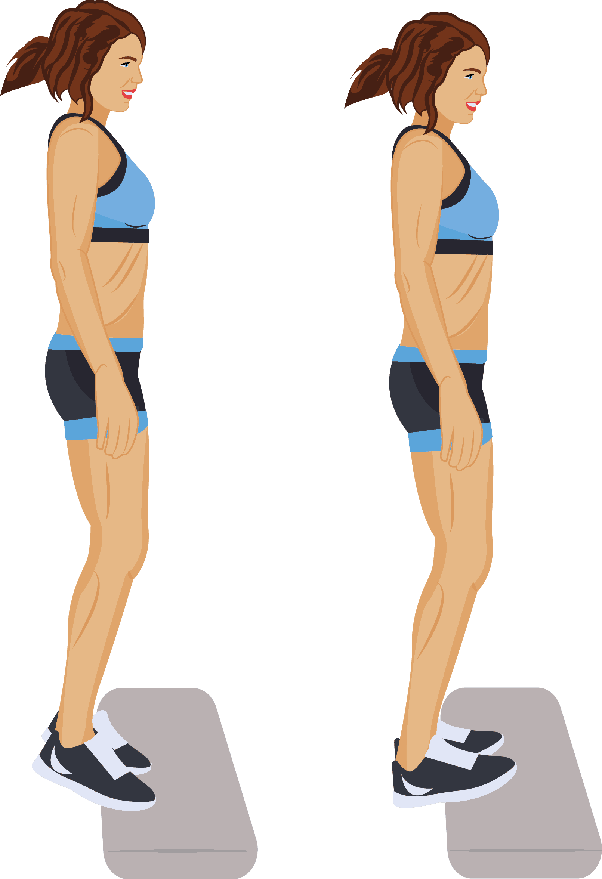
Toe raises, and heel drops on a step are simple yet effective exercises for improving ankle mobility, strength, and coordination. This exercise works the lower leg muscles to reduce the risk of injury while improving joint function and stability. It also helps promote proper posture when standing or walking, which can help to further enhance poor ankle mobility.
Here’s how to do it:
- Start by standing on the edge of a step or raised platform with your toes just hanging off the edge. Make sure you have enough room to move freely and that your back is supported.
- Shift your weight onto one foot and lift the other heel off the ground, keeping your toes in contact with the surface of the step. This will be your starting position.
- Slowly raise your heel until it is slightly higher than the level of the step, and hold this position for a few seconds before slowly returning to the starting position. Ensure you keep your toes in contact with the surface of the step throughout the exercise.
- Repeat this movement 10-15 times on each foot before taking a short rest period if necessary.
Once you’ve mastered the basic toe raises and heel drops on a step, you can add an element of instability by using a balance board or Bosu ball to further target your lower leg muscles. However, as this version requires higher levels of skill and control, it should only be attempted once you have mastered the basic version of the exercise without aids.
Ankle flexion (plantar)

Ankle flexion, also known as plantar flexion, is an important exercise for improving the mobility of your ankle joint. This exercise targets the muscles in your lower leg to reduce the risk of injury and improve joint function. It also helps promote proper posture when standing or walking, which can help increase balance and stability.
The most effective way to perform this exercise is, to begin with a seated position. Start by sitting on the floor or a chair with your legs extended in front of you and your feet spread apart at shoulder-width distance. Place your hands on the floor behind you for support or on the sides of your hips. Begin by pointing your toes towards the ground and flexing your ankles to lift your heels off the ground.
It is important not to rush the movement or push your ankle beyond its comfortable range of motion. If you experience any pain or discomfort during the exercise, stop and consult a healthcare professional to ensure that it is safe for you to continue. Additionally, you can add an element of instability to the exercise by using a balance board or Bosu ball to further target your lower leg muscles.
Ankle flexion (dorsiflexion)

Ankle flexion, also known as ankle dorsiflexion, is an important exercise for improving the mobility of your ankle joint. This exercise targets the muscles in your lower leg to reduce the risk of injury and improve joint function. It also helps promote proper posture when standing or walking, which can help increase balance and stability. When done correctly, ankle flexion can help improve your ankle joint’s strength, stability, and coordination.
Standing on a flat surface, like a wooden or carpeted floor, is the most effective exercise. Begin with your feet spread apart at shoulder-width distance and your toes pointing forward. Place your hands on the sides of your hips to steady yourself before slowly bending your knees and shifting your weight onto one foot. Keep the other foot slightly lifted off the ground and pointed forward. This will be your starting position.
From this starting position, slowly flex your ankle joints as far as possible while engaging the muscles in the lower leg. You may feel a slight stretch in the calf and ankle sprains area as you do this. Once you’ve reached your comfortable ankle joint dorsiflexion range of motion, hold this position for a few seconds before slowly returning to the starting position. Keep your toes pointed forward throughout the movement, and avoid locking your knees as you return to the initial position.
Toe-heel walks
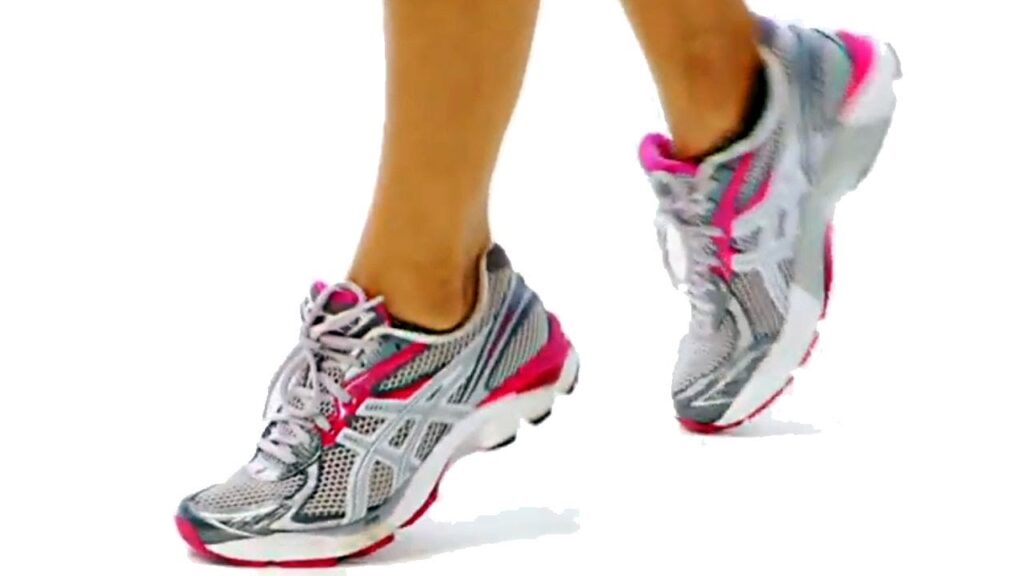
Toe-heel walks are a great way to increase ankle mobility and coordination. This exercise is ideal for athletes looking to improve their agility, balance, and overall performance on the field or court. Toe-heel walks help strengthen and stabilize the muscles in the lower leg and promote proper posture when standing or walking. The exercise also improves joint function and reduces the risk of injury.
Stand on a flat surface with your feet spread apart at shoulder-width distance to perform a toe-heel walk. Place your hands on the sides of your hips to steady yourself before lifting one foot and placing it directly in front of you so your toes touch the ground. Now shift your weight onto the toe of that foot and slowly begin to walk forward. As you do this, always keep your toes on the ground.
To challenge yourself further, you can add an element of instability to the exercise by using a balance board or Bosu ball. This will force you to engage more muscles in the lower leg and improve your coordination and stability. However, as this version requires higher levels of skill and control, it should only be attempted once you have mastered the basic version without aids.
Lunges (static)
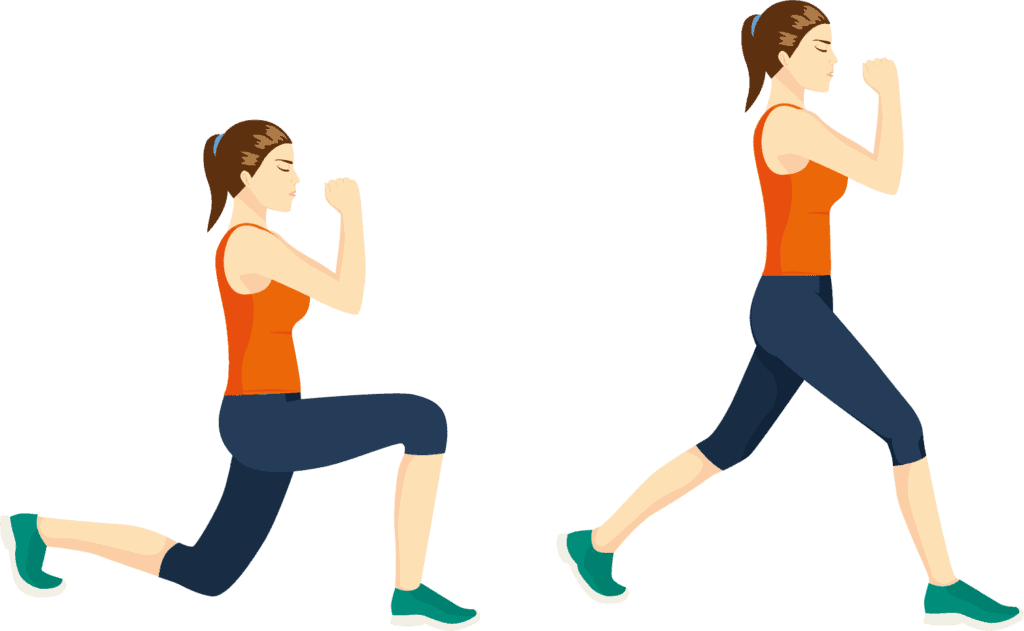
Lunges are an important exercise for strengthening and stabilizing the muscles of your lower body, particularly the glutes, and quads. Static lunges improve their balance, coordination, and overall muscular strength.
Standing with your feet spread apart at a shoulder-width distance is the most effective way to perform static lunges. Place your hands on the sides of your hips to steady yourself before slowly bending one knee and shifting your weight onto that foot.
Keep the other leg straight as you do this while keeping both feet flat on the ground. You should now be lowered with your bent facing knee forward, forming 90-degree angles at both knees. This will be your starting position.
Walking lunge

The walking lunge is an excellent exercise for targeting the glutes and quads and increasing ankle mobility. The movement requires good muscular control and balance, making it a great choice for athletes looking to improve overall coordination and performance on the field or court. This exercise also helps strengthen the muscles of your lower body, improving stability and reducing the risk of injury.
Stand on a flat surface with your feet spread apart at a shoulder-width distance to perform a walking lunge. Place your hands on the sides of your hips to steady yourself before slowly bending one knee and shifting your weight onto that foot. Keep the other leg straight as you do this while keeping both feet flat on the ground.
From the starting position, take small steps as you slowly lunge forward on one leg. Keep your knee aligned with your toes, and avoid letting it extend past them. As you do this, it’s important to maintain good posture by keeping your back straight and your chest up.
FAQs
How often should I perform ankle mobility exercises?
To get the most out of your ankle mobility exercise, it’s important to regularly incorporate them into your weekly workout routine. Aim for at least two to three times a week, but feel free to add more if you want an extra challenge. Remember to always listen to your body and take rest days if needed.
What is the best way to perform ankle flexion exercises?
Standing on a flat surface, like a wooden or carpeted floor, is the most effective way to exercise ankle flexion. Begin with your feet spread apart at shoulder-width distance and your toes pointing forward. Place your hands on the sides of your hips to steady yourself before slowly bending your knees and shifting your weight onto one foot.
Are there any safety considerations when performing ankle mobility exercises?
Yes, it’s important to always listen to your body and take rest days if needed. Also, avoid locking your knees to avoid straining them as you return to the initial position. Lastly, ensure you do not push yourself too far – only move within a range of motion that feels comfortable for you. If you experience pain or discomfort, stop the exercise and consult a medical professional.
Can advanced ankle mobility exercises help with running?
Absolutely! Increasing your ankle mobility can help improve balance, coordination, and overall muscular strength – all essential for running. Ankle sprain exercises such as toe-heel walks, lunges, and walking lunges can help develop the muscles in your lower leg to ensure you have the stability and power to take on longer distances.
Conclusion
I hope this guide has provided you with some useful information about how to improve ankle mobility and performance through various exercises. These simple but effective exercises can help athletes of all levels improve their coordination, balance, and overall performance on the field or court.
Always listen to your body and take rest days when needed. With regular practice and dedication, these exercises will help you build strength and stability in your lower body.

